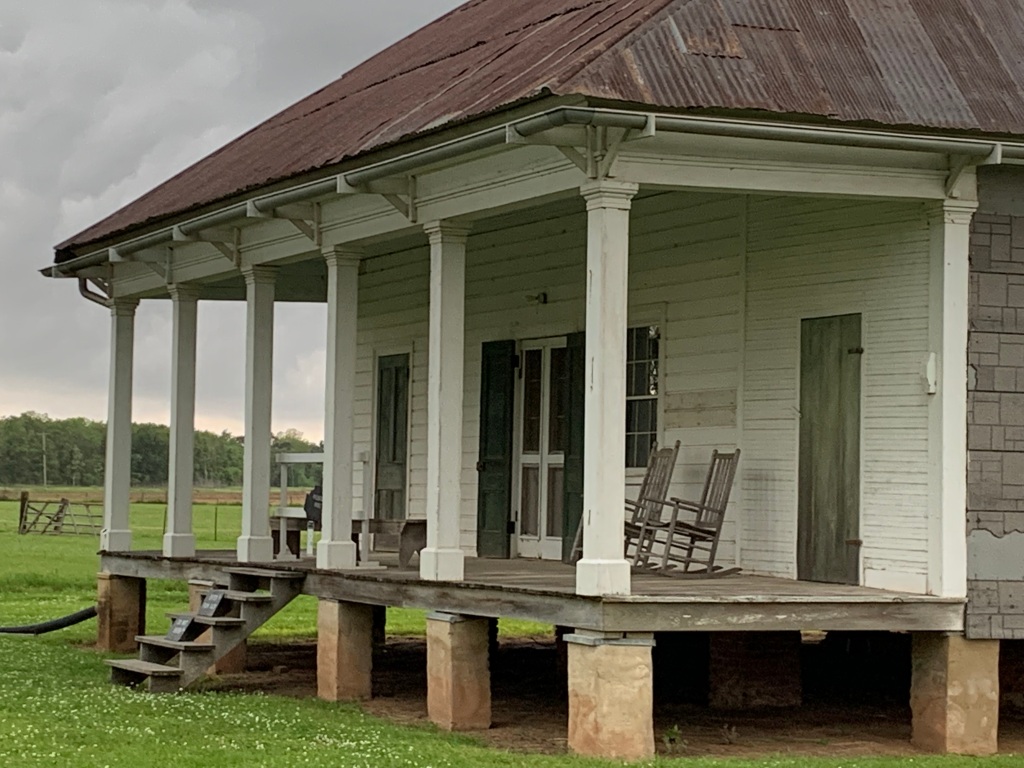
Natchez was the second largest slave market in the US (after New Orleans), but almost nothing remains. From here, many were walked to plantations up the Natchez Trace. The park service recently acquired part of the ”Forks of the Road” slave market for an interpretive site, which includes the actual slave chains pictured above. The hand in the photo is of a woman who is planting flowers to beautify the site. She explained to me that she feels compelled to do something due to the profoundly disturbing history of tens of thousands of humans sold into bondage for generations. When she first arrived here, she had trouble sleeping, and she imagines the voices of the enslaved calling out for help.
She asked me if I thought that strange, and I said it was by far the best perspective I had heard today.
I had just finished touring the Melrose mansion in the park, and all the glamour of the place left me feeling quite ill. The home of a Pennsylvanian lawyer turned plantation owner, it has all the ostentatious luxury that money could buy, with slaves next to the barn, above the laundry and dairy, and in the basement, all trained to come running at the sound of a bell. And 350 slaves working on plantations out of sight. I had to ask about those 350 slaves who actually brought in the cotton, since the placards only described a few house slaves, “laughing” and enjoying their “leisure”. The other visitors had seen the TV shows and movies filmed in the well-preserved mansion, and they seemed impressed by the lifestyles of the rich and morally reprehensible.
I could only hear the bells ringing years ago, and later, I too heard the voices.
